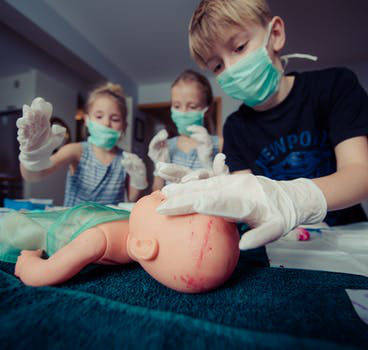While deaths caused by Motor Vehicle Incidents in British Columbia have fallen on average by 3.2% per year between 2008 and 2017, the numbers are still significantly high.
It is no surprise that road accidents and work place mishaps cause fatalities in metropolitan cities. With the hustle and bustle of city life comes a great responsibility to better care of the growing population.
Even though it is impossible to entirely curb accidents, it is best to learn, teach and spread awareness about ways to cope with an emergency situation.
For this, the most important demographic that needs mentoring is the dependent population. This largely includes school-going children who are daily encountering throngs of people, thereby, are more prone to accidents. It is of the utmost importance to teach the younger generation the fundamental life-saving tricks to enable them to better protect themselves.
Even though school architecture and environment is built keeping in mind children’s safety but accidents such as slipping, tripping, and falling still tend to happen. Mishaps largely trivialized include slipping and falling but even they can turn into life-long disability or even be fatal. For instance, Education Business reported a case of a woman at school canteen slipping and breaking her leg which later cost her her life because of a blood clot!
While it takes an average of 8 minutes for an ambulance to reach the emergency site, it would be naturally better if someone on spot could provide instant first-aid. As important as this issue is on its own, school children have not responded with less vigor. A study conducted in 2011 showed how 73% of school children were eager to learn resuscitation and reviving a victim.
How it Works
Here are a few tips on how to start a first-aid training program.
- Signing an Authorized Trainer
A renowned service provider is essential to this training process. An agreement must first materialize between the school and the trainers to begin classes as part of the curriculum. It is absolutely necessary to make this education as important as the academic curriculum because nothing matters more than their safety.
- CPR Training
Cardio-Pulmonary Resuscitation (CPR) is necessary for cases where a patient suddenly collapses. It could be either the onset of a stroke or mild fainting. This approach is best-suited for teens and adults. With practice it can be easily taught and learnt.
- First-Aid for Wounds
Cuts, burns and bleeding are some common emergency cases seen at workplaces and schools. Training should, therefore, be given on how to dress wounds and precautions to take while icing a cut or handling bleeding. Remember, more often than not, loss of blood is the main cause of dizziness in the wake of an accident.
- Swimming Basics
Swimming is a life-saving skill that must be taught to everyone. If nothing more, it can buy you a few precious moments that can save your life or help you stay afloat till help reaches in case of an accident!
- Ground Rules
It is significant to inform all trainees and pupils that even with this training go some ground rules that must not be ignored. They include some basic commandments that are also repeated on flights: please wear your own oxygen mask before helping someone else. Even though it may sound heroic but it is no good saving one life and wasting another. Goal should be to minimize human loss!
At Metro Safety Training we believe basic knowledge of first-aid is crucial to handling emergencies best. Striving to provide first aid training courses and work place safety tools in the industry since 2008, we are currently based in Coquitlam BC, almost neighboring with the Braid Street Sky Train. The areas we serve include Vancouver, Burnaby, and Coquitlam in British Columbia. Ho-ping to make Coquitlam a safer community, we are eager to take the next step towards that with you!








